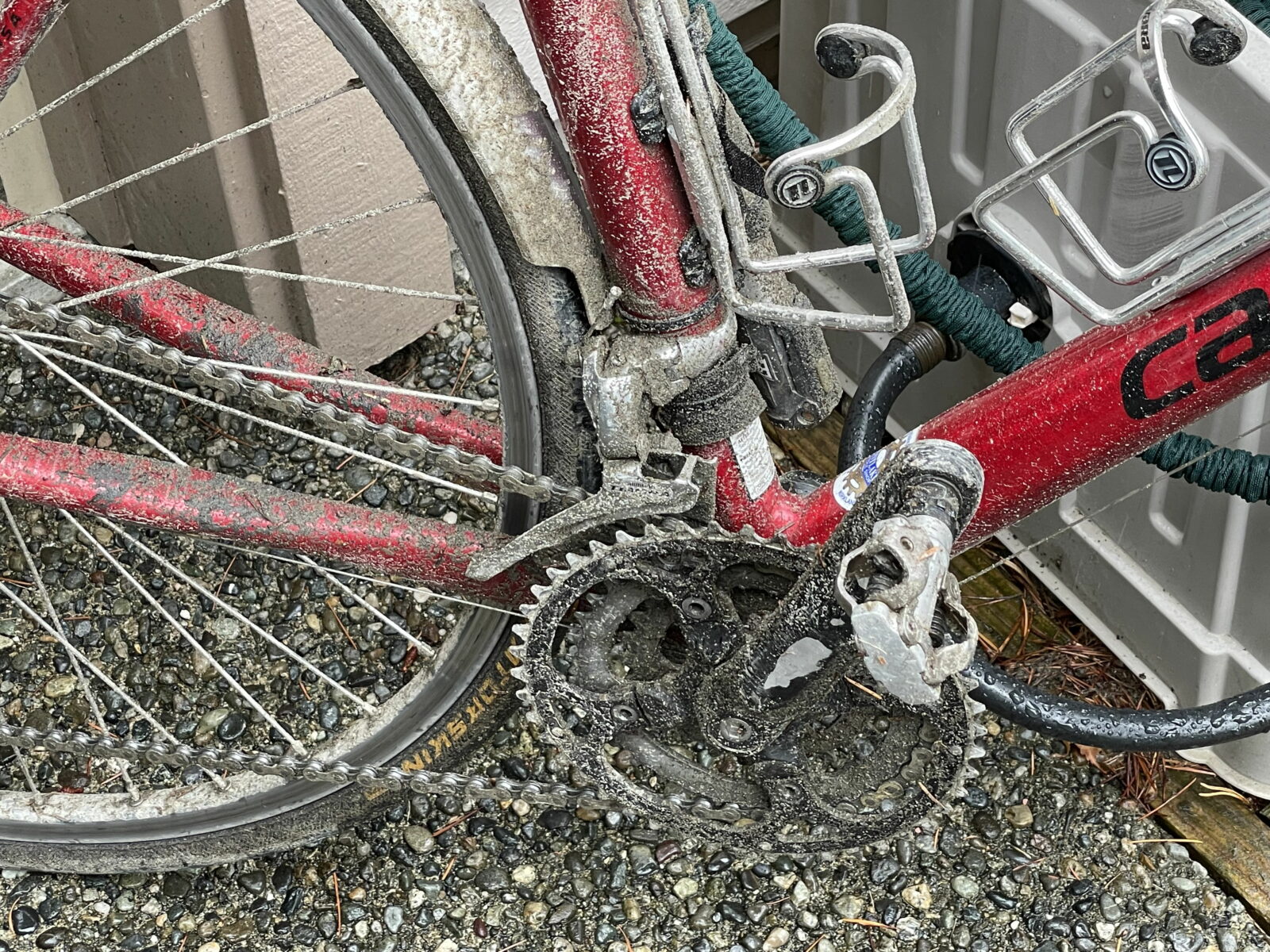When the immunization rate in western WA got high enough, the state began opening up a little, leading our first requests to support public events in nearly 18 months. Since June, I’ve worked at (basic first aid, ham radio work) four marathons: three Light at the End of the Tunnel and the Jack and Jill’s Downhill Marathon / half-marathon.
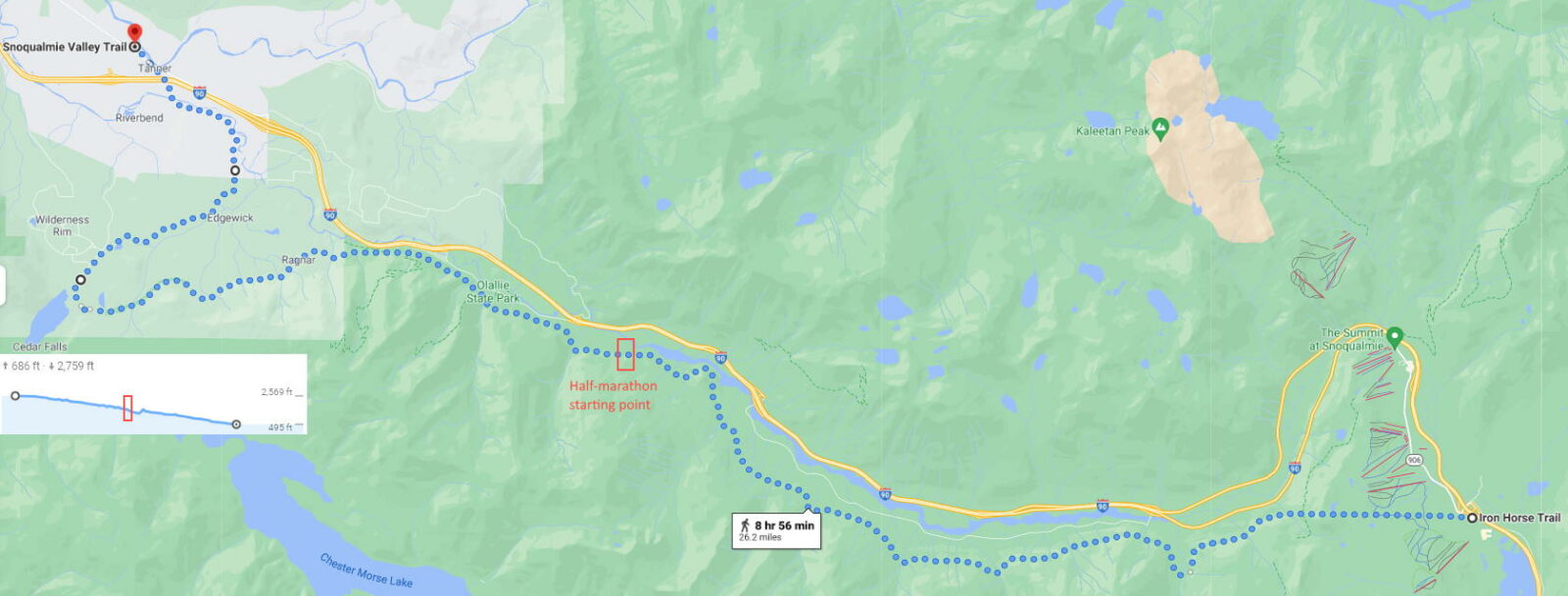
These marathons use the Palouse to Cascades State Park (aka “John Wayne” aka “Iron Horse” Trail) from Hyak to Rattlesnake Lake, joining the Snoqualmie Valley Trail to North Bend. The gentle, downhill route has some great scenery and can potentially lead to a qualifying time for the Boston Marathon.
Logistics
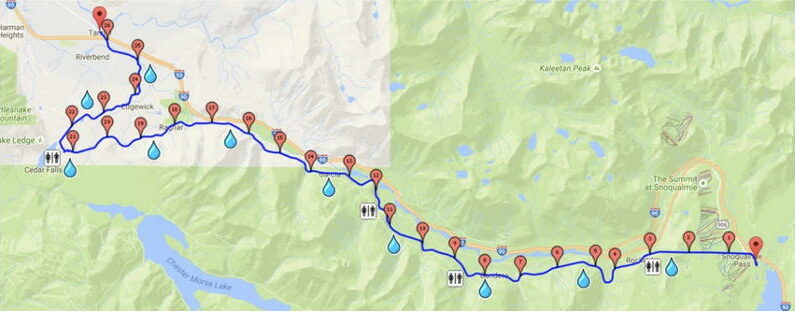
Along the course are ten waypoints (denoted above by water droplets) where race volunteers set up water/sports drink:
- 2.6 Tunnel Exit
- 5.3 Humpback
- 8.0 Bandera
- 10.7 Rock Creek
- 13.4 Garcia
- 16.4 Twin Falls
- 18.8 Cedar Butte
- 21.2 Rattlesnake
- 22.8 / 24.8 Edgewick 1/2
The fire department has a two-person crew (full-time or reserves) that operate a gator that has an AED and jump kit (EMT tools of the trade). The gator allows them to transport someone to one of the waypoints for urgent egress from the course from a friend or race volunteer. Because there is only one, it’s used sparingly for life-threatening events. If a runner can walk or hobble to the next waypoint, they are encouraged to do so. (Marathoners tend to be very tough in that regard.)
In other words, this is not the “SAG” wagon that accompanies long-distance biking events and will take a rider (and bike) to the finish.
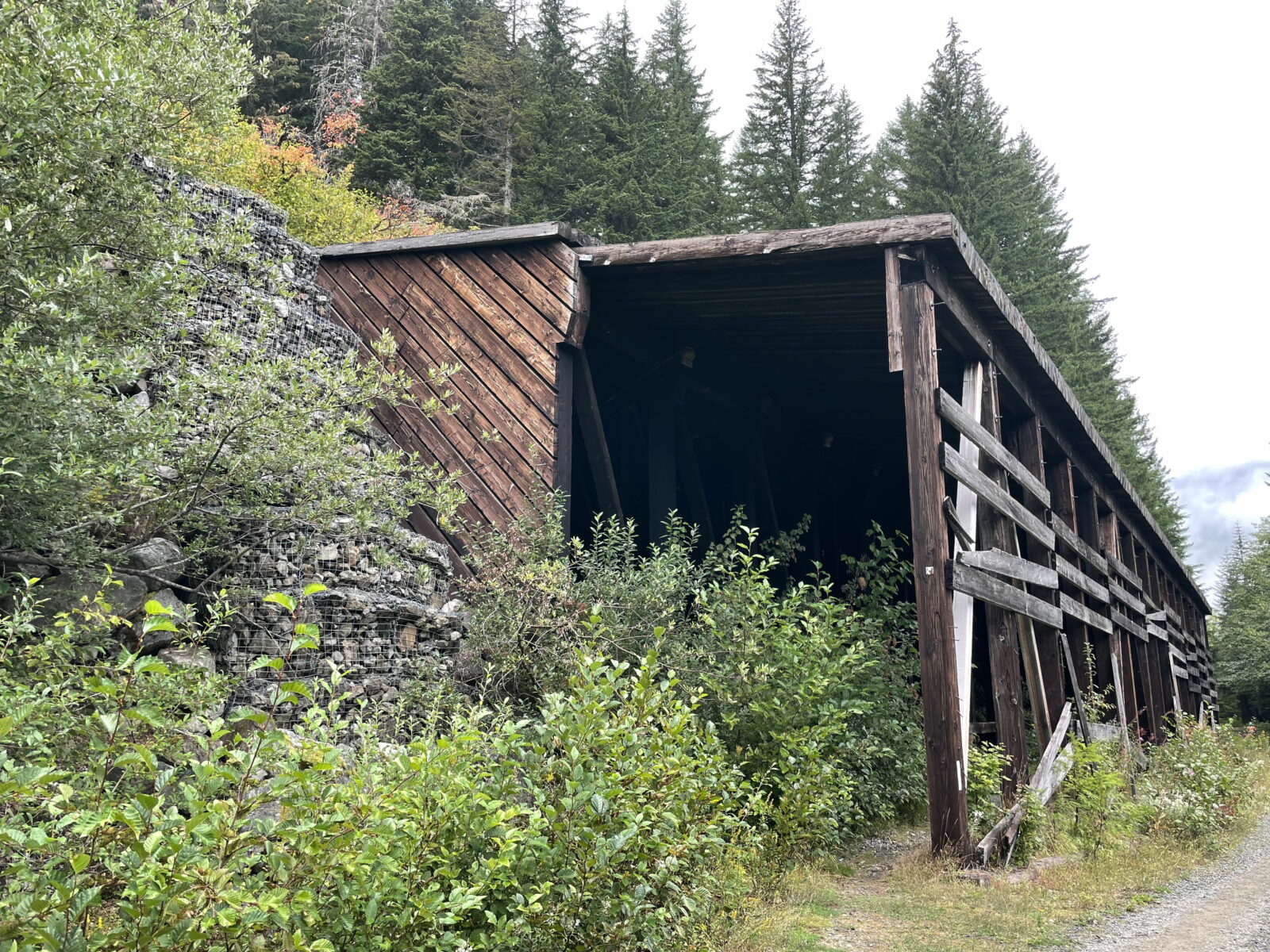
To supplement the less urgent issues, and when staffing permits, we have a couple of folks riding bicycles along the course. We carry a first aid kit, radio, Mylar blankets, sometimes an AED (defibrillator for heart attacks). Bikes can get to someone quickly, try to remedy a situation, or triage for the professional crew if needed. (I’ll have more general examples in a bit.)
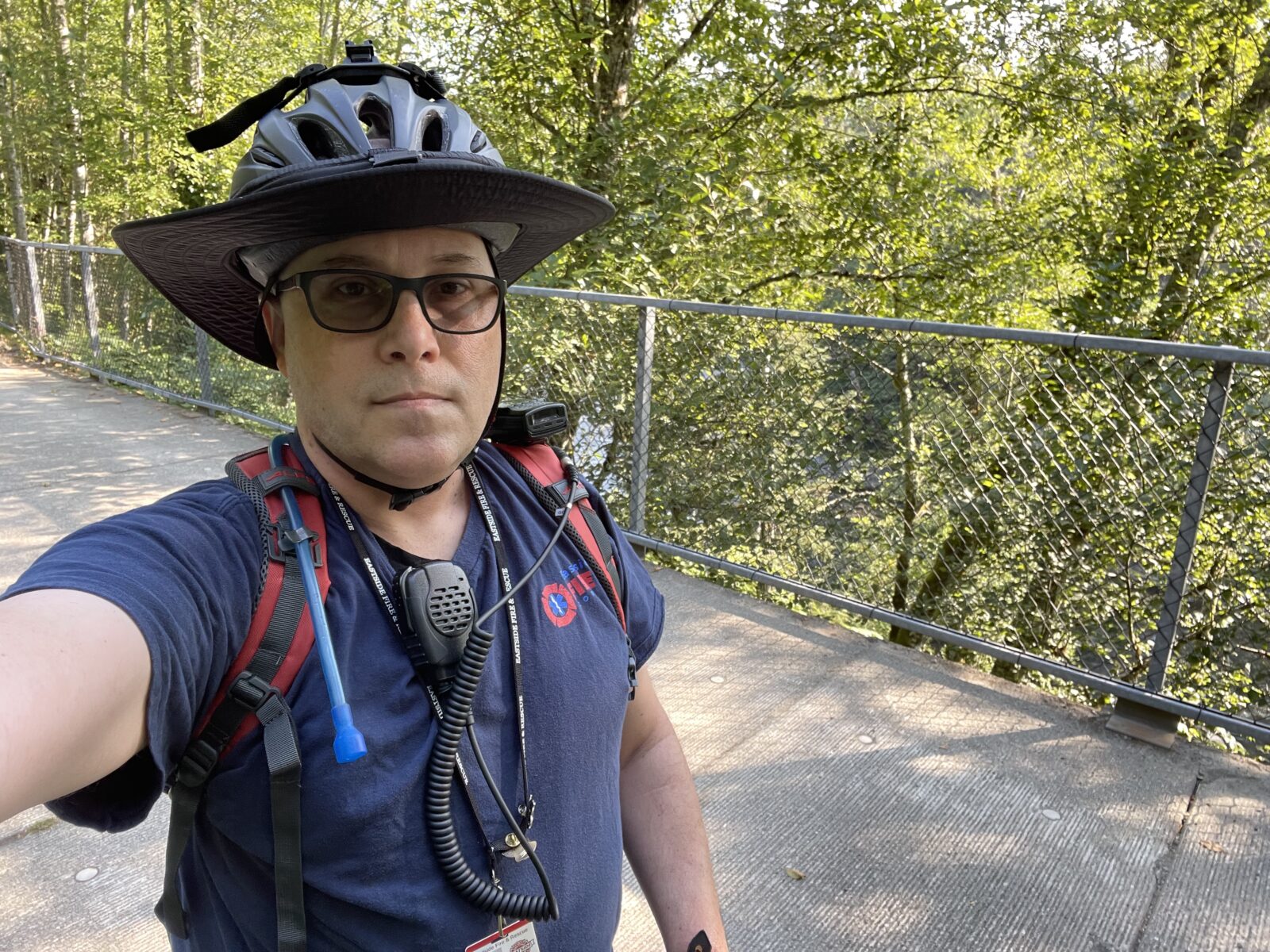
If we have only one rider, they’ll go backwards from the finish line to the “Rattlesnake” stop (5-miles left), then ride up and down the course. If we have a second rider, they’ll start at the beginning and follow the 80% – 90% group of riders, or about 4:20 – 05:00 pace. There’s a pretty wide tail of runner times towards the end.
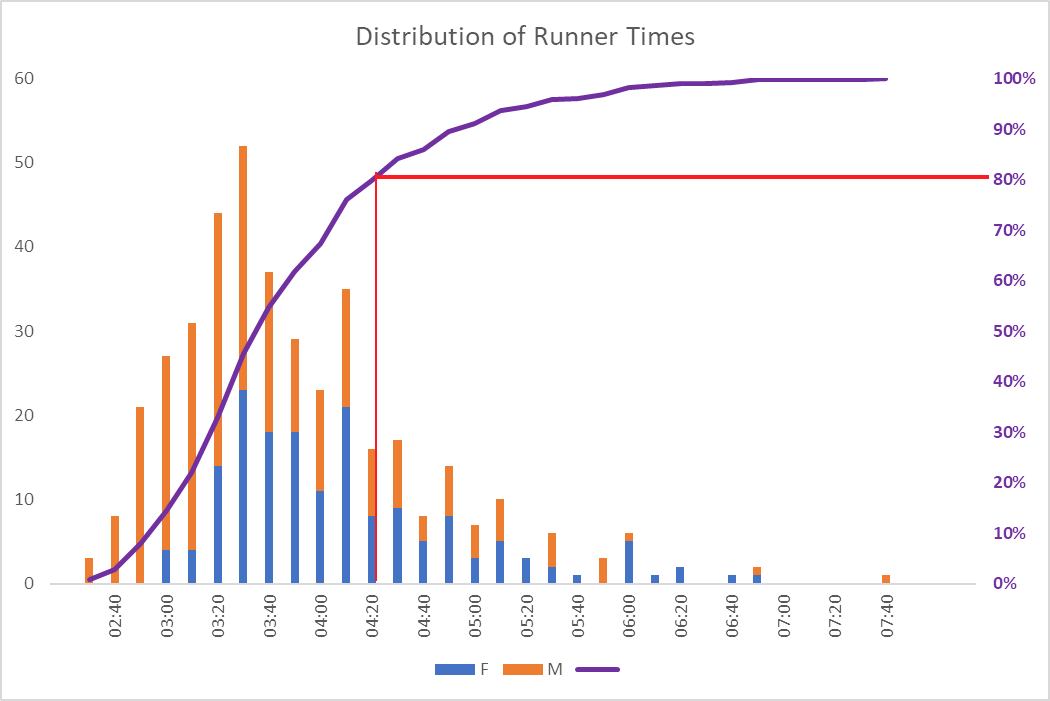
Example situations I’ve seen
The first aid kit I carry is basic, as is my level of training, but is a starting point. Some of the most common things I’ve seen:
- Runner abandons the course – Most times, the runner has a friend pick them up at one of the exit points. If it’s cold and rainy, I might offer a Mylar blanket for them to keep warm until they can get to an exit point. I will relay the Bib # to the finish line (hence, the radio) where the information can be passed along to the race organizers.
- Runner falls – If the runner can get up on their own, is lucid, and willing, they’re okay to continue the course and clean up later. Invariably, the running partner is more alarmed than the runner themselves. This also happens every race.
- Runner’s torso is slanted sideways from vertical. I see at least two of these every marathon and it still freaks me out. Because it seems to occur in the last five miles, we’ve formed theories that the runner is on auto-pilot but their vision or balance has been affected from the bouncing around. We can ask if they require assistance, but 99% of the time they will decline help. There’s nothing we can do but radio ahead and worry.
- Runner passes out – In the handful of situations I’ve had, they runner is done for the day. They’ll probably start having chills, are unable to eat without vomiting, and may be unable to stand up. I’ll try to help get them stabilized enough to get to a point where they can be picked up by a friend (or, sometimes, a volunteer with a car). If necessary, the gator can come up the trail.
- Bees, bears, mean bicyclists – The best we can do is warn upstream to be wary these hazards. Bears and bees want to be left alone. Mean cyclists seemed to chill out a bit when they saw me coming the other way. Public trail folks, don’t be an ass.
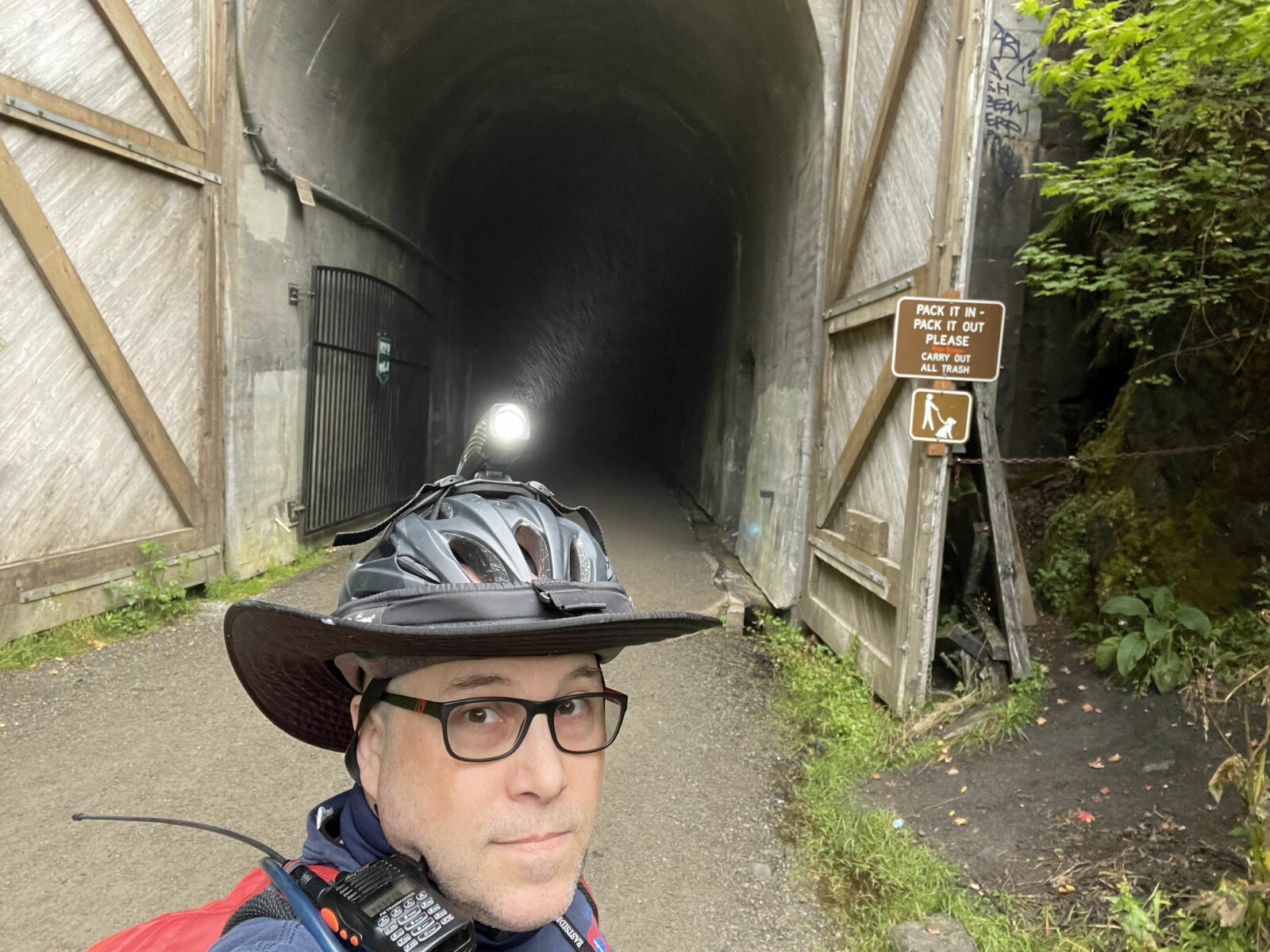
The Course
The course starts with the pitch-black 2.3-mile tunnel. While you can see the slowly expanding pixel of light, it’s not enough to avoid banging into something. A flashlight or headlamp is essential. Runners have headlamps that they can drop off at the first rest stop past the tunnel exit. On extra-bright, my NiteRider illuminates the inside walls well.
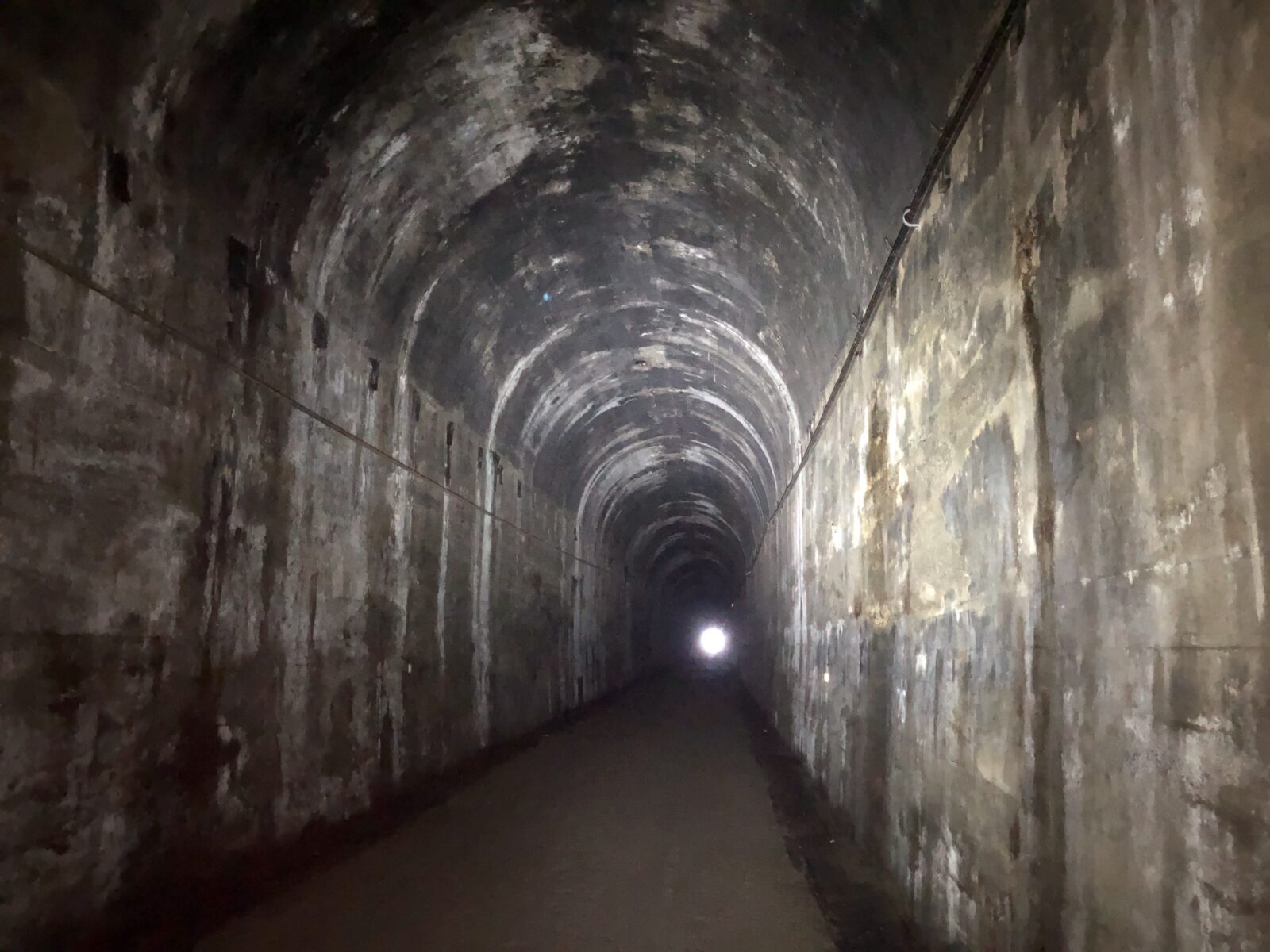
Jackets are recommended because inside the tunnel is cool and water seeps through the hundreds of feet of rock above. Over time, speleothems have formed on the ceiling. But the runners won’t have time to notice these or the remnants of the former railroad that this tunnel supported a century ago.
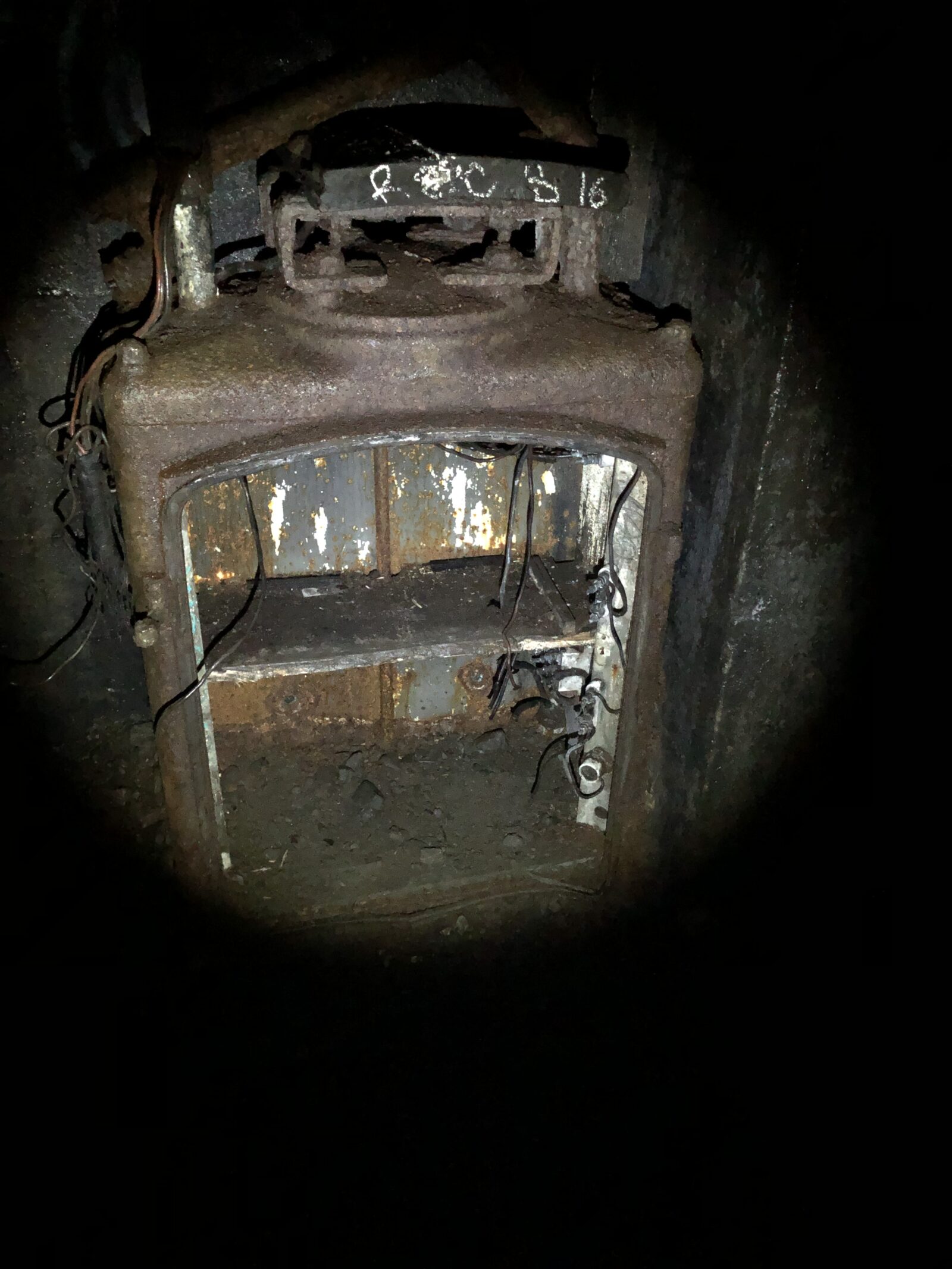
Every time I’ve gone, the predominant wind flow was west to east. Near the exit, the air becomes noticeably drier. On a clear day, the sun is jarringly bright.
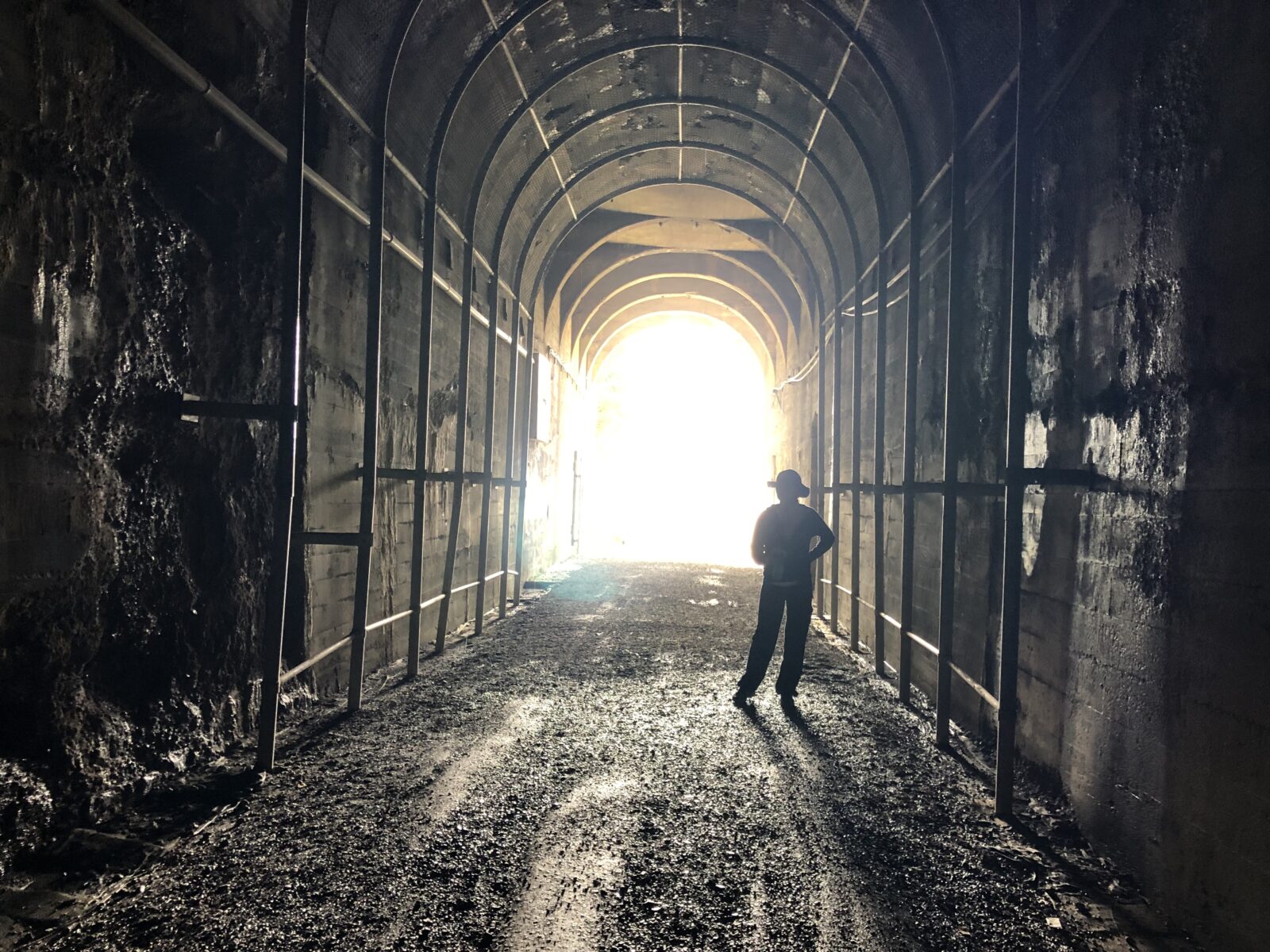
On my most recent event, I was keen on getting through this before the faster marathoners did; otherwise, I’d be waiting on the other side for the slowpokes in the crowd to work through. Dark tunnel + maintaining distance + echoes from a lot of people in it == not a great time on a bike. Although I was riding at a decent clip, I could see little lights bobbing around behind me. Some of these folks are fast.
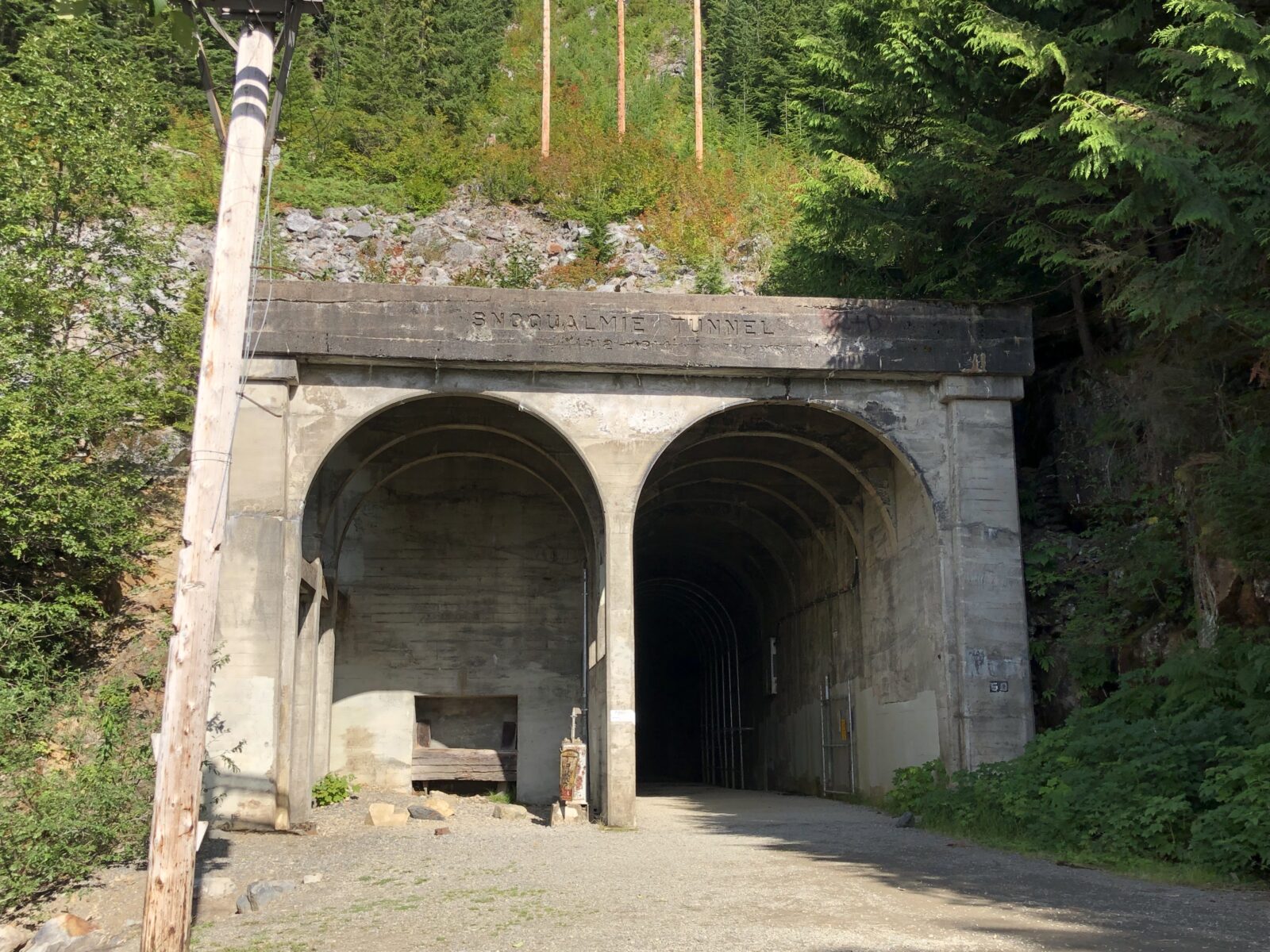
And, finally, we emerge from the tunnel. There is a pit toilet and a couple of picnic benches that make for a nice stop to remove the jacket, grab a snack, and blow snot rockets out of both nostrils. During the marathons, there are volunteers with a drop for headlamps and jackets, and a table with water/Nuun (sports drink,cosponsor). As this is mile 2.3, the pack is still relatively tight. Since there are picnic benches, I hung out until the flow of folks emerging was reduced to a trickle. Wouldn’t you know it just as I removed my jacket, rain began?
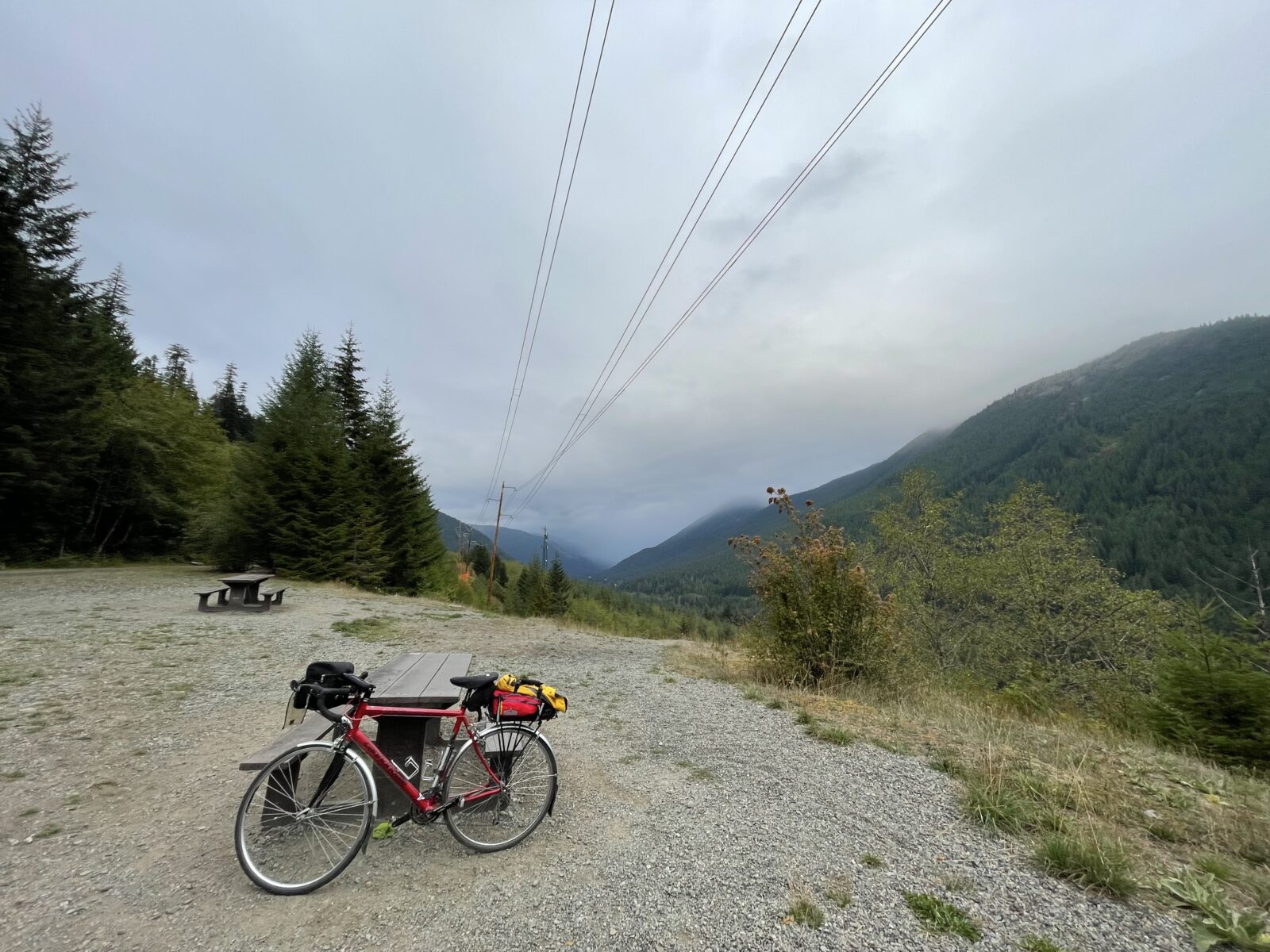
Sometimes marathons will have official pacers who run the course carrying a sign like “3:30” or “4:15.” The idea is someone who wants to maintain that specific pace can hang out with them. The groups seem to have a better time. It is uncanny how accurate the pacers are.
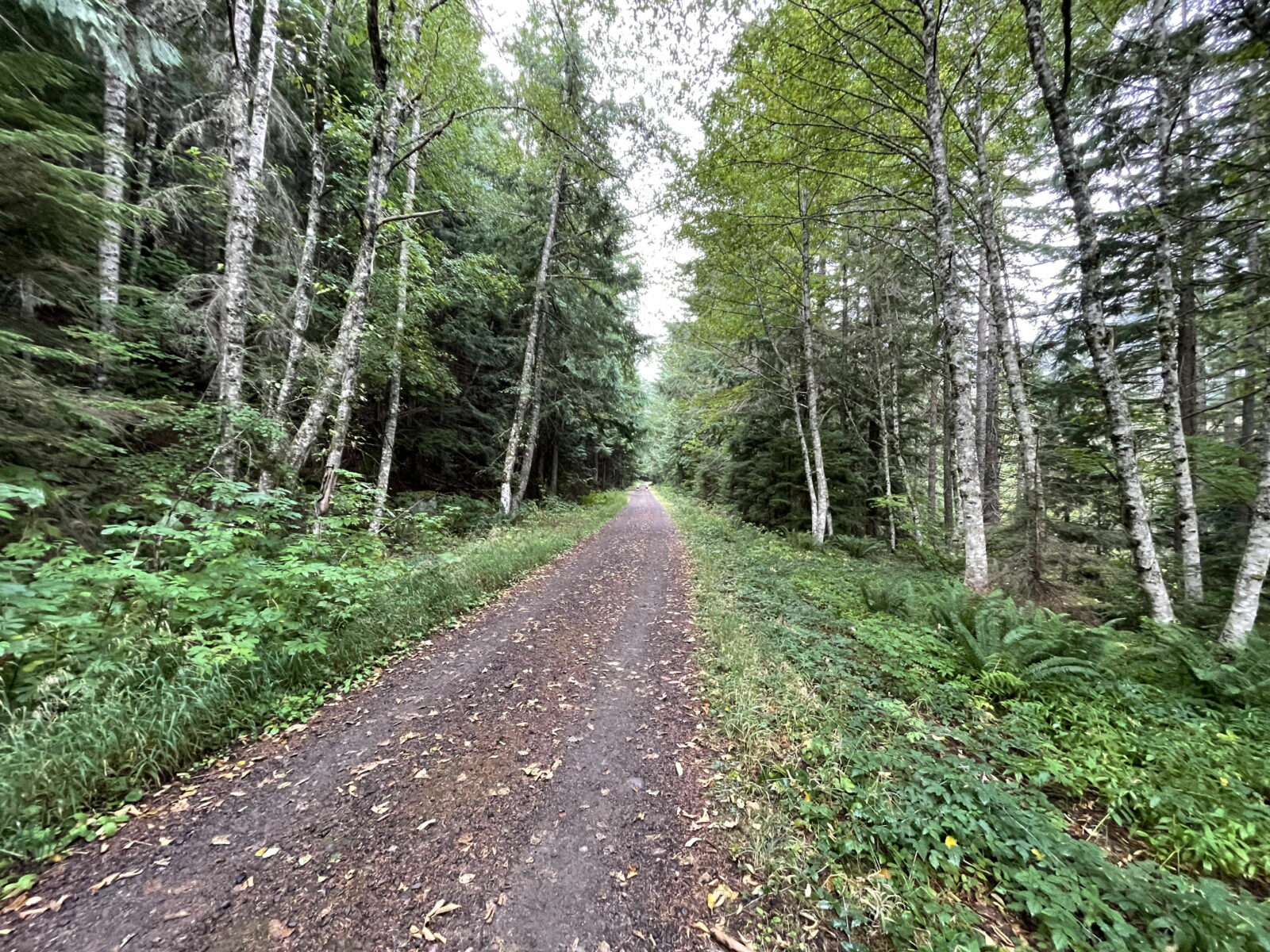
Path ahead 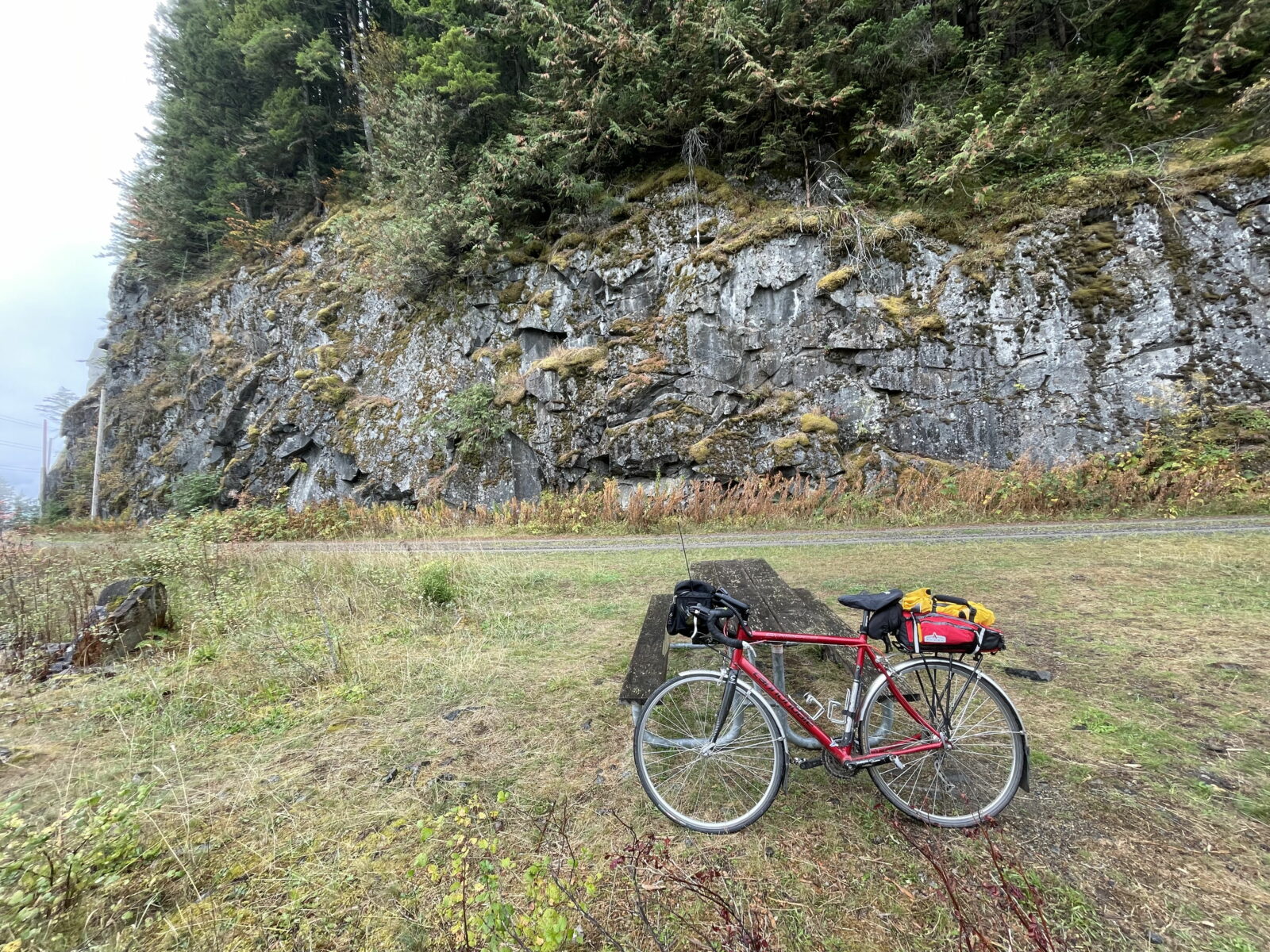
Midpoint 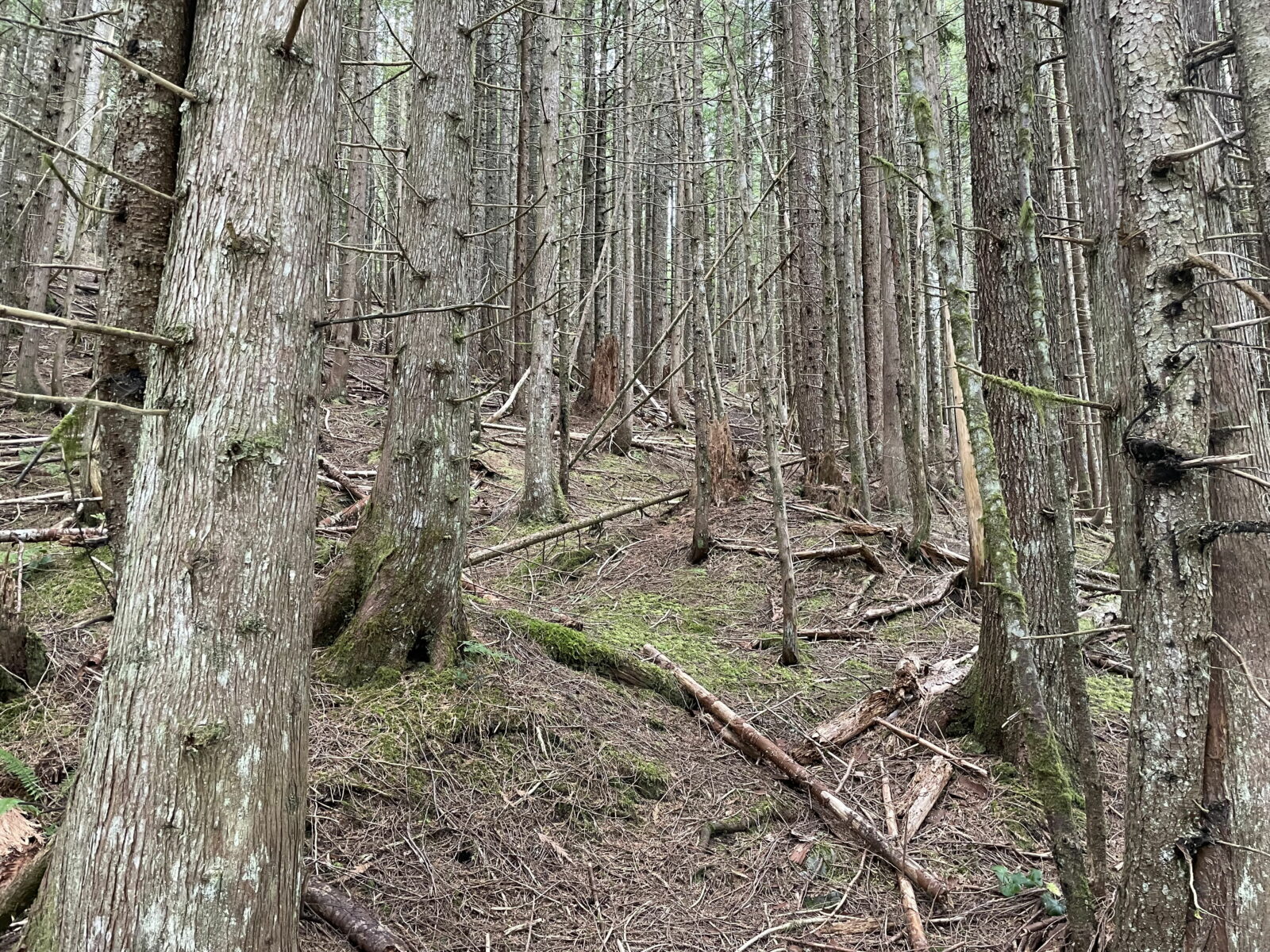
Forest above the trail 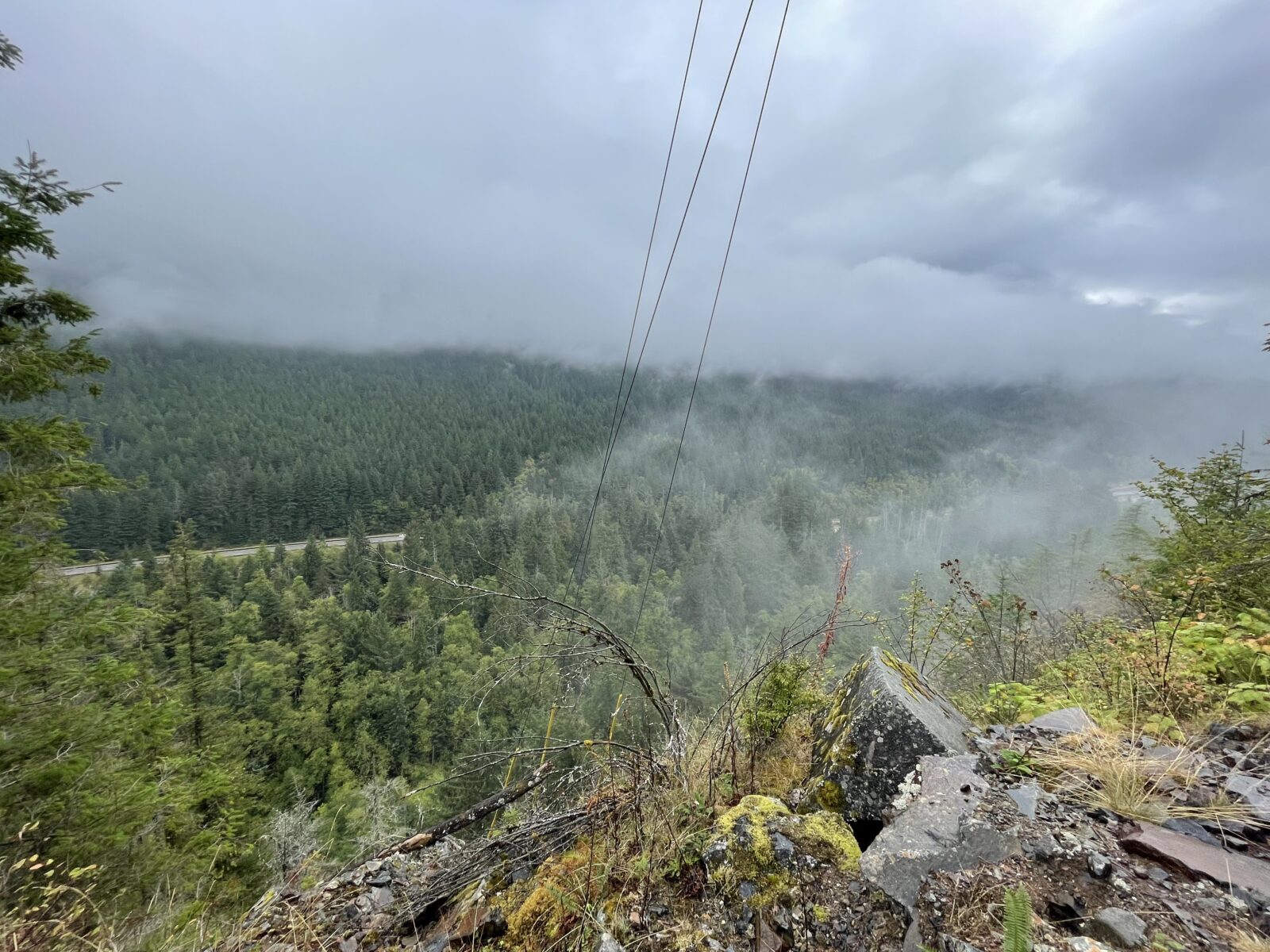
Looking out over I-90 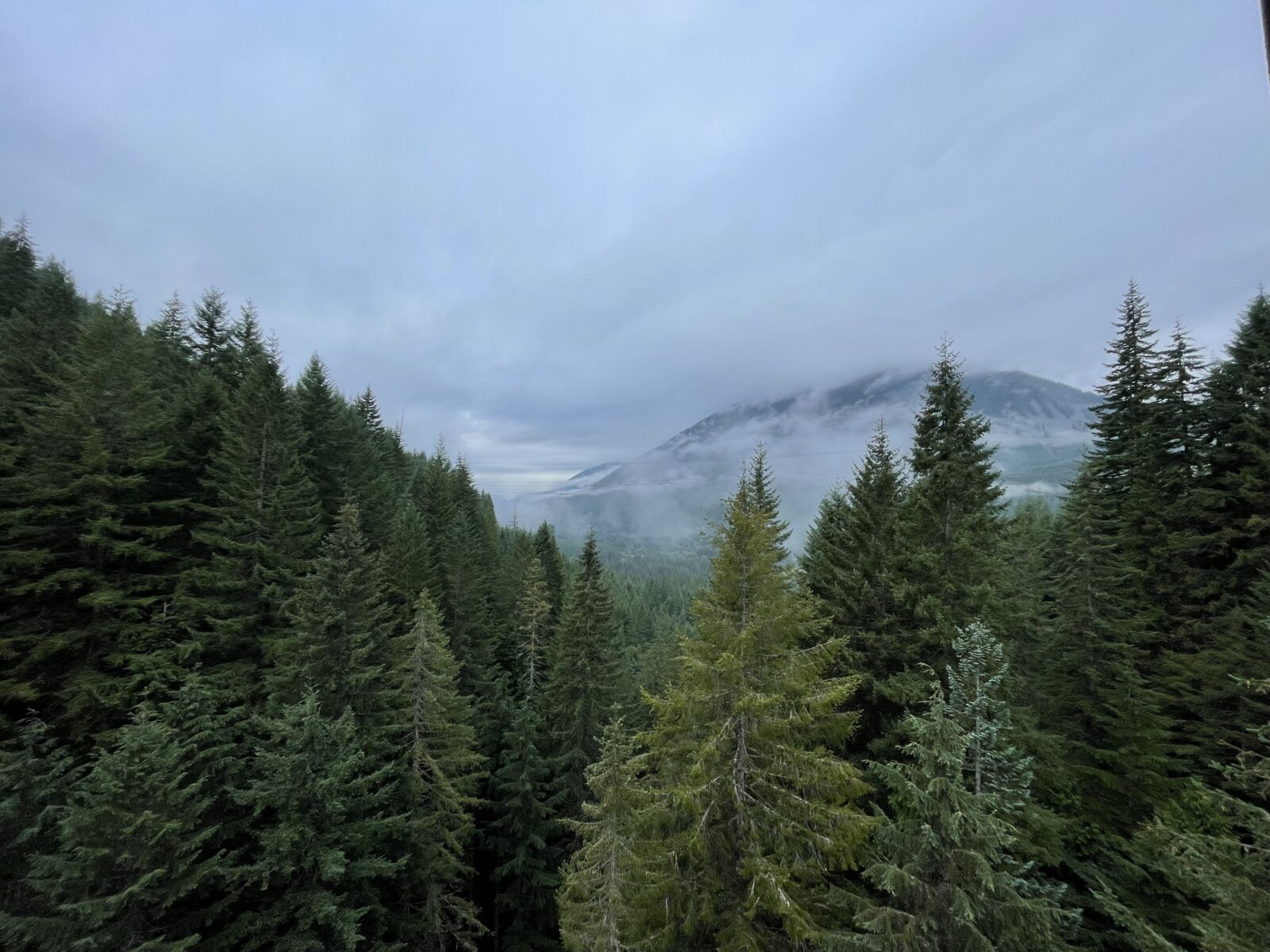
Misty mountaintop 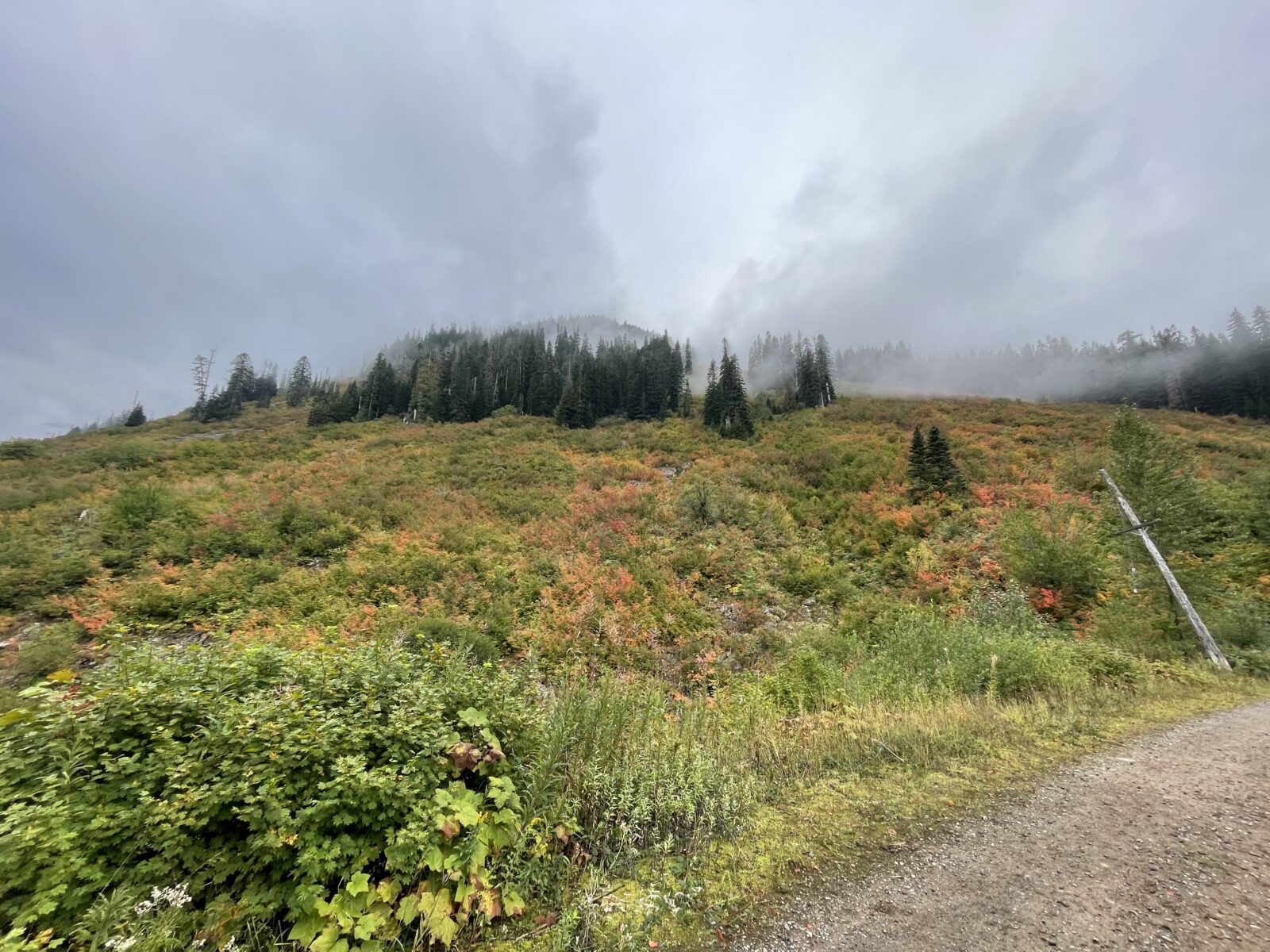
Fall colors
The nice part about playing leap-frog with a pack of runners is the solace and taking in the scenery.
In the past, I usually finish the course about Start + 5:15. There is an official race sweep vehicle (a minivan) collecting tables & trash from the stops, as well as offering the last few runners a ride back.
Once home, I gawk at how utterly dirty the drivetrain got, even with fenders.
